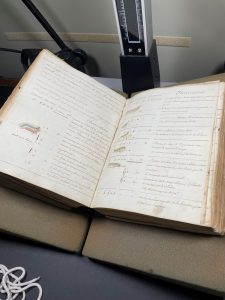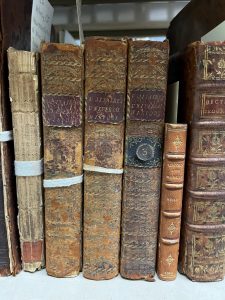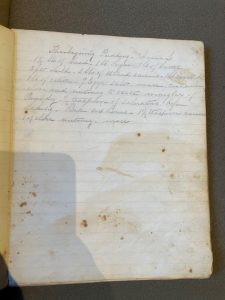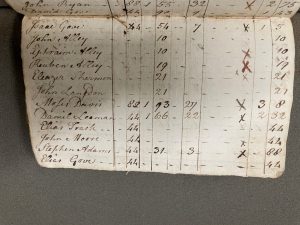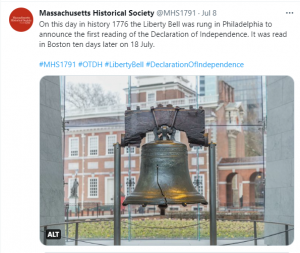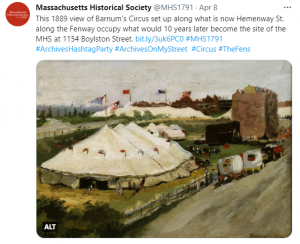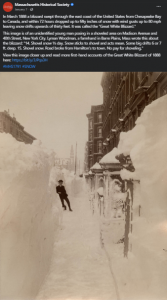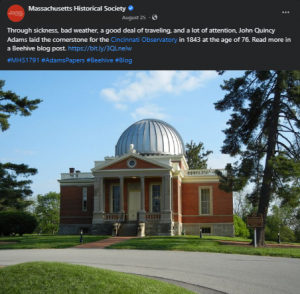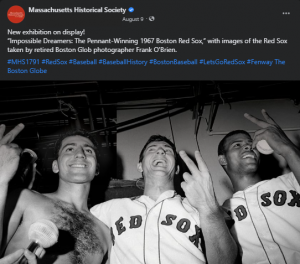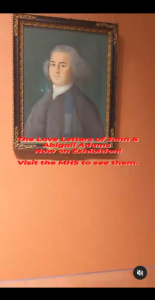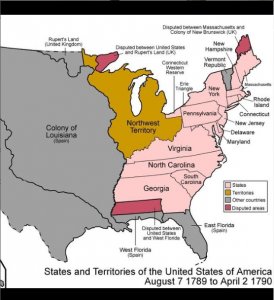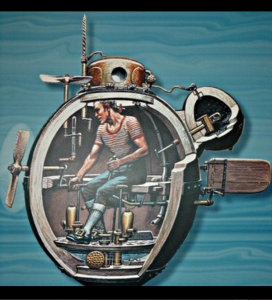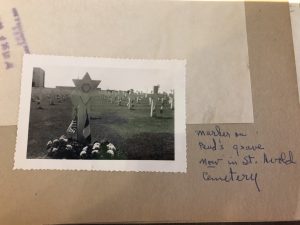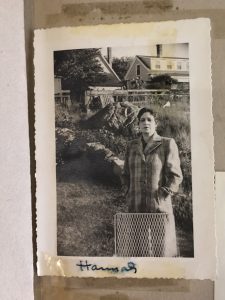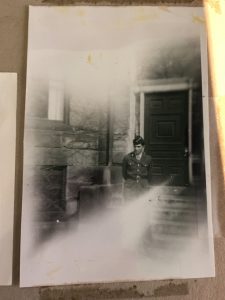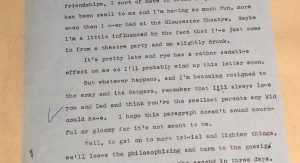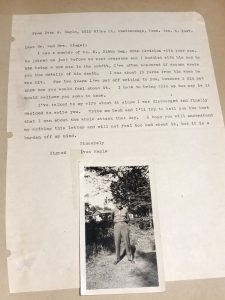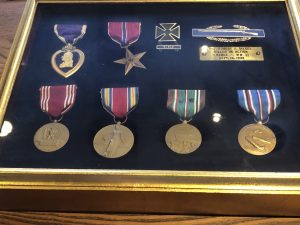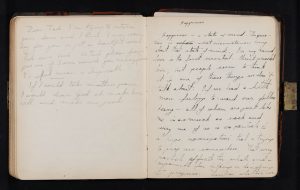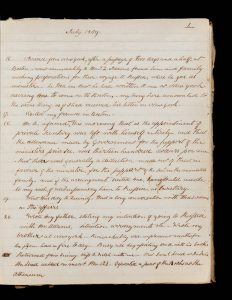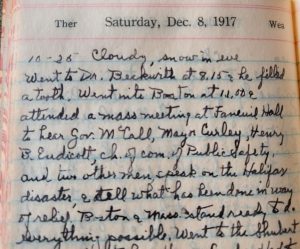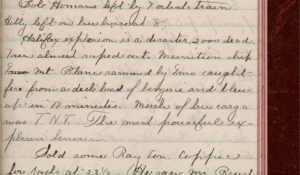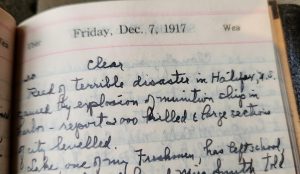By Emily “Em” Gates, Georgia State University
Historical Cases of Melancholia and Their Relationship to American’s Literary Beginnings
My dissertation project, entitled “A Young, Sad Country: Melancholia in Colonial New England and Its Impact on Early American Literature” investigates the relationship between historical cases of melancholia, an early name for depression, and the creation of an American literary tradition. I chose this topic because I noticed that in early American scholarship there was less focus on mental afflictions than those affecting the body, and that the general tone of many works of early American literature was very sad in nature, featuring either melancholic characters or tragic plotlines. For this project, I felt it was extremely important to link literary works with archival documents in order to demonstrate how context from the world an author lives in can shape the fiction they write.
I am very grateful to have received the NERFC fellowship, as it gave me access to a treasure trove of archival documents related to the eighteenth-century understanding, treatment, and experience of living with mental illness. The method I use to organize my dissertation anchors works of early American literature to their real-life counterparts through close-reading and comparative analysis, using eighteenth century medical and religious documents to help typify early American literature as narratives exemplifying love and/or religious melancholia1. The Massachusetts Historical Society (MHS) was particularly useful because it provided sources that relate directly to the literary works I am examining.
One work I explore is Hawthorne’s short story “The Minister’s Black Veil” (1836), the main character of which is based on Reverend Joseph “Handkerchief” Moody of York, Maine. Moody was a minister prone to bouts of melancholy and Hawthorne effectively captures in language the darkness that surrounded Moody, basing his story on a period where Moody wore a handkerchief over his face, an act that concerned and confused his parishioners. At the MHS, I read Philip McIntire Woodwell’s Handkerchief Moody: The Diary & The Man, which provided effective biographical insight and allowed me to read Moody’s diary in his own words. It is clear from Moody’s diary that religious melancholy pervaded his life, causing him to doubt his self-worth, mental stability, and most importantly, the state of his soul. Moody uses negative language to describe himself, saying he is “of a very inconstant mind2”, feels as though “all my religion has very nearly vanished3” and that his soul is “So deeply insensible4” and “wretched5.” Interestingly, Moody’s language and choice of imagery echoes other historical cases of religious melancholia I’ve encountered, notably Benjamin Lyon of Connecticut and the Reverend Edward Taylor of Westfield, MA, whose diaries and sermons help corroborate my theory of melancholia being a prevalent affliction in early America.
In my dissertation, I also analyze William Hill Brown’s The Power of Sympathy (1789), a dramatization of the scandalous affair between politician Perez Morton and Boston heiress Francis “Fanny” Theodora Apthorp6, and Susanna Rowson’s Charlotte Temple (1794), which are both examples of seduction novels. Each major historical case I look at shares a fictionalization in early American literature that adds to the mythos passed down through the American media and word of mouth, perpetuating melancholia as a key theme in our earliest works. Additionally, I argue, the subject matter of each narrative also points us towards the need for a closer examination of melancholia as a prevalent affliction across all demographics in multiple colonies—an important context I scrutinize using evidence from medical practitioners’ account books and diaries and religious authorities’ sermons and journals across New England. There is still much more material to sift through and many ideas left to develop, but I am confident, thanks to my time at the MHS and the other NERFC member institutions I visited, that my project will demonstrate the high prevalence of melancholia in New England and its influence on the creation of our nation’s earliest literature.
Notes
1. The types of melancholy used in this dissertation, as well as their definitions, come from Robert Burton’s The Anatomy of Melancholy (1621).
2. Moody, Joseph. Handkerchief Moody: The Diary & The Man, edited byPhilip McIntire Woodwell. 3 Apr. 1721. Massachusetts Historical Society.
3. ——————. Handkerchief Moody: The Diary & The Man, edited byPhilip McIntire Woodwell. 14 Apr. 1721. Massachusetts Historical Society.
4-5. ——————. Handkerchief Moody: The Diary & The Man, edited byPhilip McIntire Woodwell. 6 Apr. 1723. Massachusetts Historical Society.
6. Morton and Apthorp were brother and sister-in-law and their affair rocked Boston in 1788. The affair resulted in an illegitimate child and led to Apthorp’s suicide. Fanny Apthorp’s suicide note to Perez Morton is available at the MHS and I was able to read it during my time there in August 2022.


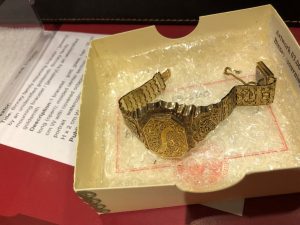
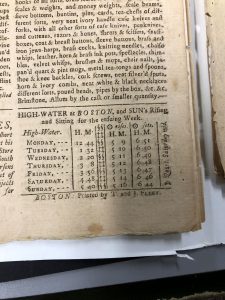
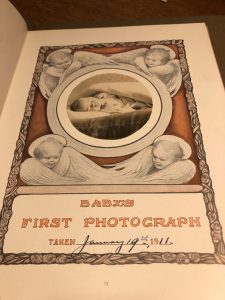
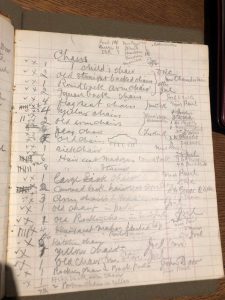
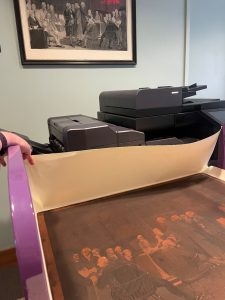
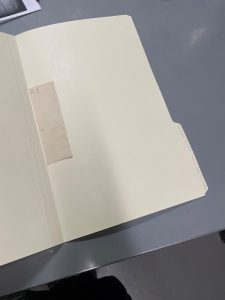
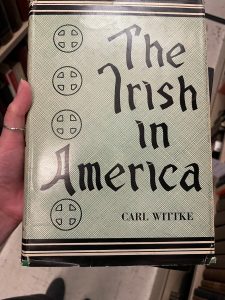
![Comical drawing of a man with mustache and receding hairline, whose breeches extend up to his neckline. He holds a top hat in his left hand, a riding crop[?] in his left. Not signed.](https://www.masshist.org/beehiveblog/wp-content/uploads/2022/12/Freds-breeches-225x300.jpg)
